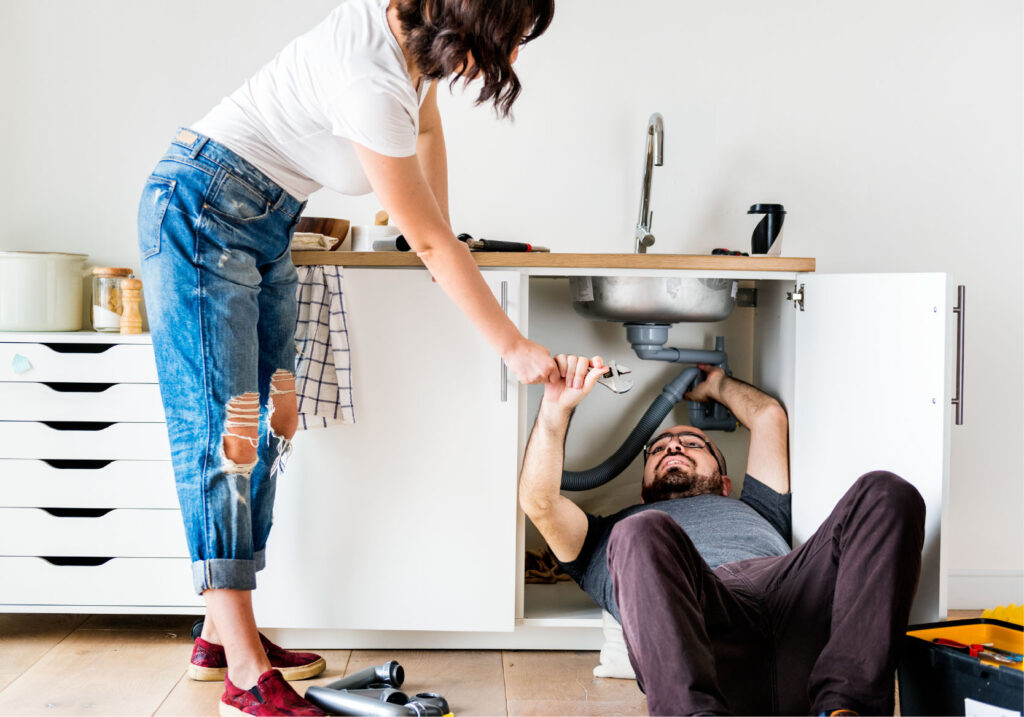You’ve finally found what could be your dream home, but what’s hiding behind those freshly painted walls? A new roof can cost $11,500 or more, foundation repairs can add another $10,000, and rewiring a house can be downright shocking for your budget. You’re ready to make an offer, but the thought of unseen problems draining your savings is enough to hit the brakes.
So, how can you move forward with confidence?
That’s where the home inspection comes in. A professional inspector gives you an unbiased, top-to-bottom snapshot of the property’s condition, potentially saving you thousands and helping you make the right final call. Whether you’re buying your first home or just brushing up on the process, this guide covers everything you need to know: what a home inspection is, what inspectors look for, and what to do once you get the report.
What is a Home Inspection?
A home inspection is a non-invasive, professional evaluation of a property’s overall condition. Conducted by a qualified inspector, it usually takes place after the seller accepts your offer and before closing. The goal? To uncover any hidden or undisclosed issues that could affect your purchase decision.
Inspections are important because home inspectors work for you, not the seller. Since buyers typically pay for the inspection, inspectors have no stake in whether the sale goes through. Their only job is to provide an unbiased, fact-based report on the home’s condition at the time of inspection.
The reality is that no house is flawless. Even a seemingly perfect listing can hide small problems or costly repairs. A thorough home inspection acts as your roadmap to the property’s key systems, helping you make an informed purchase.
So, what exactly does an inspector look for? Let’s break it down.
What Factors Can Impact the Home Inspection?
Most home inspections follow a similar process, but good inspectors adapt their approach to each property’s unique features. That said, every inspection shares two key traits: it’s non-invasive and visual.
1. Non-invasive
A standard inspection won’t damage the home. Inspectors don’t cut into walls, remove ceiling panels, or dismantle systems. If repairs are needed after an inspection, it’s because of identified issues and not because the inspection caused them.
2. Visual
Inspectors assess what they can see and safely access. They won’t move heavy furniture or enter blocked-off spaces. If a critical feature (like the electrical panel or attic) isn’t accessible, the inspector will either schedule a follow-up or mark it as “not inspected” in the report.
Outside of these, the best way to understand the specifics of how your inspector will approach your buyer’s inspection is to ask them which standards of practice they follow. The vast majority of inspectors you meet will follow one of a few standards of practice:
- The InterNACHI Standards of Practice, from the International Association of Certified Home Inspectors
- The ASHI Standards of Practice, from the American Society of Home Inspectors
- The CAHPI Standards of Practice, from the Canadian Association of Home & Property Inspectors
On top of this, certain states may have their own standards, or they may adopt one of these standards wholesale. For example, all Texas-licensed inspectors must follow the Texas Real Estate Commission (TREC) standards in order to remain compliant in their state.
Ask your inspector which standards they follow for a better idea of their specific approach. An inspector who doesn’t follow a recognized standard is a major red flag. They may be uninsured, meaning if they miss something costly, you could be left holding the bill.
What’s Typically Included in a Home Inspection Checklist?
Now that we’ve covered the standards inspectors follow, let’s look at what’s actually on the checklist. (Tip: If you’re unsure whether something is covered, just ask your inspector! Every property is different.)
A standard home inspection is a visual examination of the entire property, from foundation to roof. It typically includes, but isn’t limited to:
- Basements, foundations, and crawl spaces
- Attics, insulation, and ventilation systems
- Doors, windows, stairs, and railings
- Exterior walls, porches, and lawn grading
Keeping these systems in good shape can prevent costly repairs and protect against health hazards such as pest intrusion, mold growth, and poor indoor air quality. However, the most important elements on a home inspector’s checklist are those that tend to carry the biggest price tags and have the most impact on occupant health and safety. These features are known as the Four Cornerstones of a Home Inspection:
- #1: Roofing. Checking for active leaks, damaged materials, and signs of age.
- #2: Electrical Systems. Confirming proper function, identifying fire hazards, and ensuring compliance with safety standards.
- #3: Plumbing. Inspecting for leaks, clogs, and signs of wear in supply and drain lines.
- #4: Heating, Ventilation, and Air Conditioning (HVAC). Evaluating basic operations, safety, and remaining lifespan of climate control systems.
A thorough inspector will be particularly focused on locating safety hazards here and evaluating whether any of these systems are nearing the ends of their useful design life.
Some inspections may additionally expand into ancillary services such as sewer scope inspections, which can locate sewer line breaks, or radon testing, which measures the amount of dangerous, cancer-causing gas in the home. These add-on services aren’t included in a standard inspection, but can be worth including for peace of mind.
What Happens After the Home Inspection?
With the report in hand, buyers can use their inspection findings to either close on their new home, request key system repairs, negotiate on a lower purchase price, or even walk away from the deal altogether. The inspection is an essential step of every home purchase, providing buyers with a fuller understanding of their biggest single investment, and even providing a maintenance guide for years to come.
If you are a home buyer looking for assurance on your next home purchase, be sure to call National Property Inspections. NPI is the property inspection industry’s premier name, performing expert service across the United States since 1987.
Every NPI inspector is specially trained, insured, and equipped with the right tools for the job. Call NPI before you buy!



